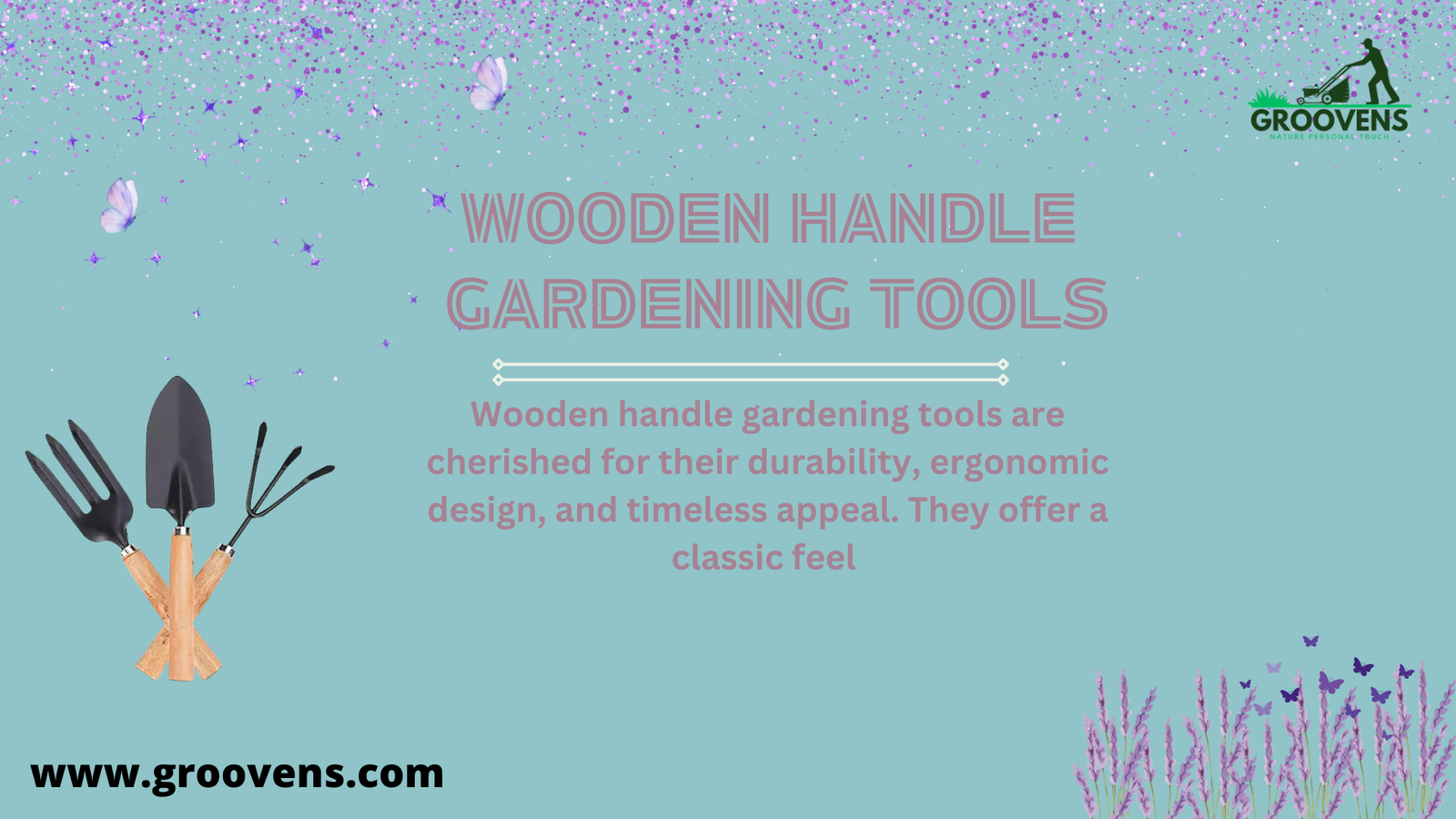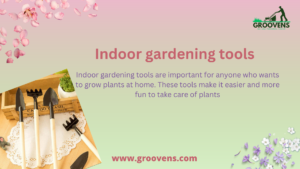Wooden handle gardening tools are cherished for their durability, ergonomic design, and timeless appeal. They offer a classic feel and can be an excellent choice for novice and seasoned gardeners. This article delves into the benefits of wooden handles, the types of tools available, and tips for their care and maintenance.
Wood Tool Handles
Different types of wood are used to make the handles of wooden handle gardening tools , and each kind has unique qualities. For example, Hickory is solid and can handle a lot of force, making it great for tools like hammers and axes. Ash is also strong but a bit lighter, which makes it suitable for tools like shovels and rakes. Maple is smooth and pleasant to hold, so it’s often used for tools that need to feel comfortable, like garden trowels.
It would help if you did a few simple things to keep these wooden tool handles in good shape. First, clean them after you use them to remove dirt and moisture. You can also rub oil on the handle to keep the wood from drying out and cracking. Finally, check the handles for any damage, like splinters or cracks, and fix them immediately to ensure your wooden handle gardening tools last a long time.
Different Woods Used for Wooden handle gardening tools and Their Impact on Performance
The handle of a tool is essential because it affects how comfortable and easy it is to use it and how long it will last. Choosing the right type of wood for the handle can make a big difference. Some woods make handles that last long, while others might break or wear out quickly.
Hardwood & Softwood Tool Handles
Hardwoods are like trees that wear clothes that change colors in the fall and then remove their clothes for winter. Softwoods are like trees that wear the same outfit all year round and never change it. So, hardwoods have leaves that turn colors and drop, while softwoods have needles that stay green and don’t fall off.
Hardwoods like Hickory, oak, and ash are solid and rigid, making them great for wooden handle gardening tools. Imagine if you have a hammer or a shovel that you use a lot; you want its handle to be strong so it doesn’t break. These hardwoods are super tough materials that can handle lots of use without wearing out, so they are perfect for making the handles of extensive tools.
Softwoods like pine are easier than hardwoods but are still suitable for specific tools. They are better for making lighter wooden handle gardening tools like brooms, rakes, and some handles because they are easier to work with and not as heavy. Even though they’re softer, they work well for things that don’t need to be super strong.
Types of Wood Used for wooden handle gardening tools
There are different types of wood used for tool handles:
Hickory
Hickory lumber is excellent for making wooden handle gardening tools because:
- Strong: Hickory is tough and can handle a lot of force, so it’s perfect for tools that get hit hard.
- Shock Absorbing: It helps make the tool-less bouncy and easier to use by soaking up the shakes and vibrations.
- Straight Grain: The wood has a straight pattern that strengthens and steadies the handle.
- Heavy: It’s a heavy wood, which makes the tool feel solid.
- Best for Hickory is used for tools like hammers, mallets, and axes because it’s strong and helps keep the tool steady.
Oak
Oak wood is strong and flexible, making it great for making wooden handle gardening tools that need to last a long time. Here’s why:
- Strength: Oak is adamant and can handle a lot of wear and tear, so it’s used for wheelbarrows and spades.
- Flexibility: Oak can bend a little without breaking, which is useful for tools that need to stretch or bend, like handles.
- Grain Texture: The wood has a bumpy surface, which can look cool and make it stronger but can also be tricky to smooth out.
Uses:
- Chisels: Oak makes strong handles that can handle heavy use.
- Spades: It’s perfect for shovels that need to be rigid and flexible.
- Wheelbarrows: Oak can hold heavy stuff, so it suits wheelbarrow frames and handles.
Ash
Ashwood is excellent for making wooden handle gardening tools because:
- Straight Lines: Ash wood has straight lines that make it solid and easy to use.
- Bounce Back: It can handle a lot of hits without breaking, so it’s perfect for tools like shovels that get a lot of use.
- Robust and Flexible: Ash is strong and bends a bit without breaking, which helps with tools like wheelbarrows and handles that need to be tough.
So, ash wood is an excellent choice for wooden handle gardening tools that must be strong and durable.
Maple
Maple wood is excellent for making wooden handle gardening tools because:
- Intense and Lasts a Long Time: Maple is adamant and can handle a lot of use without breaking. This makes it perfect for tools that get used a lot.
- Smooth and Detailed: Its smooth surface allows for making pretty designs and fine details. This is why it’s used for tools that need to do precise work, like chisels and gouges.
- Keeps Its Shape: Maple doesn’t change shape or crack easily, so the tools stay helpful for a long time.
Beechwood
Beechwood is excellent for making wooden handle gardening tools because:
- Smooth and Easy to Use: Beechwood feels soft and friendly, so it’s suitable for making tools that must be precise and look nice.
- Stays Strong: It’s very tough and doesn’t get worn out quickly, so it works well for tools that use a lot.
- Keeps Its Shape: Beechwood is strong and doesn’t change shape, which helps tools like saws and wheelbarrows stay solid and reliable.
Pine
Pine wood is great because:
- Soft and Easy to Hold: Pine is soft, so it’s comfortable to grip and use for a long time.
- Simple to Shape: Because it’s soft, making tools like brooms and rakes that feel nice is easy.
- Lightweight: Pine is lighter than other woods, making tools more accessible.
Advantages of Wooden Handles
Comfort and Ergonomics:
Wooden handle gardening tools are often designed with ergonomics in mind. They can be shaped to fit comfortably in your hand, reducing strain during extended use. The natural material also provides a warm and pleasant grip.
Durability:
High-quality wood, such as Hickory or ash, is extreme and can withstand significant wear and tear. Properly cared for, Wooden handle gardening tools can last for many years.
Aesthetic Appeal:
Wooden handle gardening tools add a touch of classic elegance to gardening tools. They blend well with natural garden environments and often feature beautiful grain patterns.
Sustainability:
Wood is a renewable resource, making wooden-handled tools a more environmentally friendly choice compared to some synthetic materials.
Care and Maintenance
Proper care and maintenance of wooden handle gardening tools are essential for ensuring their longevity and optimal performance. By regularly cleaning, drying, oiling, inspecting, and storing your tools correctly, you can protect the wood from damage, maintain their functionality, and enjoy the benefits of these tools for years to come.
Cleaning: Regularly clean wooden handles to remove dirt and sap. Use a mild soap solution and a soft cloth, avoiding excessive water that could lead to warping.
Drying: Ensure handles are thoroughly dried to prevent moisture-related damage after cleaning.
Oiling: Periodically apply a light linseed or mineral oil coat to the handle. This helps protect the wood from drying out and cracking.
Inspection: Regularly check handles for signs of wear or damage. Replace any tools with compromised handles to maintain safety and effectiveness.
Storage: Store tools in a dry place to avoid exposure to moisture and extreme temperatures, which can affect the wood’s condition.
Conclusion
Wooden handle gardening tools are unique because they combine old-fashioned charm with practical benefits. They are strong, comfortable, and kind to the environment. You can enjoy gardening with these elegant and practical tools for a long time by taking care of them and using them correctly.



